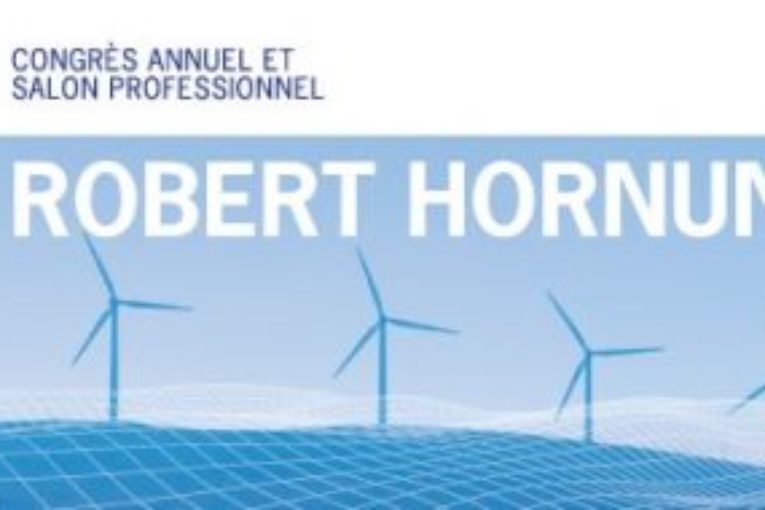
2018 started off as the year that wind energy took the pole position on lowest cost when it comes to Canada’s electricity generation options. With so much progress and potential for the sector in the air, we spoke with Robert Hornung, President of the Canadian Wind Energy Association (CanWEA), to learn more about the future for wind energy in Canada.
One of the most significant changes for the wind energy sector is how it is perceived by policymakers and the public: “Wind energy is now seen as a mainstream power source”, says Hornung. “When I started at CanWEA, I would have people tell me I was working with ‘toy power’ and it was a technology that would never be able to compete, never be anything more than a marginal contributor. Wind energy has now been the largest source of new electricity generation for a decade. It’s also now the lowest cost source of new electricity generation. The industry has fundamentally moved from a place of dreamers and visionaries to being very real.”
He also points out the change in the makeup of the industry over the years and the powerful effect this has had on the industry’s ability to evolve and compete: “If you look at who’s involved in the wind energy industry now, it has moved from smaller companies to some of the largest multinational companies in the world. It’s moved from being something that larger corporations saw as an experiment or a way to ‘green’ their portfolio to being a fundamental business driver.”
“The wind energy industry has a lot to be proud of – it has delivered on its promise to contribute to a cleaner, stronger electricity grid – and we’ve only scratched the surface of what’s possible. We have a past we can be extremely proud of, the technology continues to evolve, and the future looks even brighter.”
With Alberta’s latest round of procurement in December 2017 resulting in pricing wind energy as the lowest-cost source for new electricity in Canada, wind energy is gaining traction as a major competitor in the energy market. “I think it has served to bust one of the major myths that persists with today’s wind energy: that it is expensive,” says Hornung. “The dramatic drop in costs in recent years, and as evidenced by the auction in December, has changed the playing field in jurisdictions looking to build new electricity generation. The cost advantage opens up new opportunities for the industry and positions us extremely well going forward. Having said all that, it’s not a time for the industry to rest upon its laurels: every form of generation is looking to reduce costs and wind energy must continue to hold that focus.”
Throughout the industrialized world, it has become well known that demand for electricity is growing slowly – growth for the wind energy sector, and for renewable energy generally, is being driven by policies to reduce carbon dioxide (CO2) and other greenhouse gas emissions. Canada, Hornung emphasizes, is no exception: “Decarbonization is now what we anticipate as the main driver of demand for clean electricity in Canada. That is in part why there is so much potential in Alberta and Saskatchewan – they currently have fossil fuel-intensive energy grids, including a lot of coal power that is now being phased out. The wind energy market is in a great position for replacing that power.”
“The other thing we see are opportunities where existing generation comes offline. Ontario is looking now to refurbish its nuclear facilities. Once they come offline, there will be a need for replacement power. We expect that need to emerge in the early to mid 2020’s. At that time, wind energy will be well positioned, given its cost-competitiveness, to help fill the gap.
Hornung also notes opportunities in other parts of Canada, focussed on meeting energy needs south of the border. “For example, in Quebec (which already has an almost entirely non-emitting energy grid), there is a keen focus on using both wind and hydro electricity to help decarbonize the grid in the Northeastern United States. Hydro Quebec released a report this spring outlining potential savings to the U.S. to decarbonize its grid with Canadian imports rather than trying to do it domestically.
All this points toward a transformation of Canada’s, and North America’s, energy grid. “There is a grid transformation underway toward a more diverse range of generation sources that are more decentralized and interconnected,” Hornung says. “This opens up some interesting opportunities for wind for two reasons: 1) wind energy can provide more services to the grid than just low-cost energy, and can support grid reliability if encouraged to do so as regulatory and market frameworks modernize; and 2) as we move to a grid that’s closer to 100 per cent renewable, there is no single technology that can provide all the services the grid requires, but wind can play an important role. It will ultimately require a collaboration between different technologies, working together to provide services we need to have clean, reliable and cost-competitive electricity.“
If you want to meet Robert Hornung and other leaders shaping the vision and future for the wind energy sector, we invite you to attend the CanWEA Annual Conference & Exhibition 2018, Canada’s largest wind energy conference, October 23-25 in Calgary. Space is filling quickly!
REGISTER NOW
President of the Canadian Wind Energy Association
You can read more of the news on source



